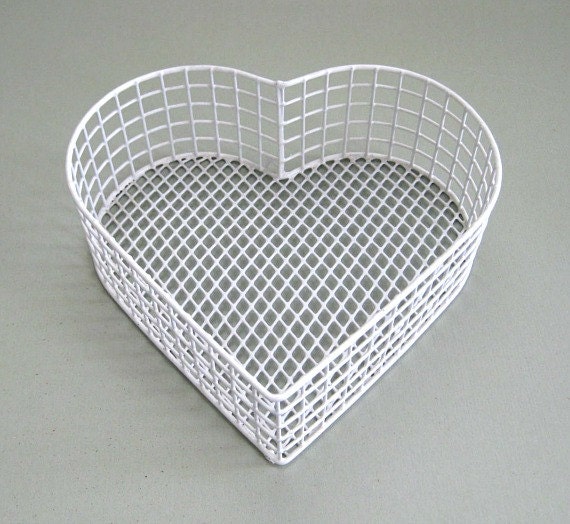


By the end of that summer, I was so done with watering that it put me off hanging baskets for years. No, I didn’t line the colander, why do you ask? As a result, all the water drained out as soon as I poured it. I had found a super cute colander for a dollar and, with the help of some twine and a little knot work, turned it into a hanging basket. But I do remember making it in a fit of frugal DIY years ago. Luckily, I haven’t made this mistake in a long time. Mistake 3: You’re not lining your baskets. It’s not too large to be a problem, nor too small to crisp up easily. The basket that I’m planting this summer is mid-sized, about 15 inches (38 cm) in diameter at the top.
#SMALL WIRE BASKETS FOR WALL PRO#
My pro tip: Use an empty pot as a base to keep the basket upright when you plant it. On the other hand, large hanging baskets are also a problem, due to how heavy they get when they’re saturated with water. Plants need soil to anchor their roots in, and poor root development will usually inhibit plant growth.īut if you only have space for a small basket, that’s better than no basket, right? If in doubt, start with a mid-sized basket.Īnother problem with using small baskets is that there’s no room for enough potting soil.

So if you’re not getting enough rain or if you’re planting thirsty plants, you might want to upgrade.
#SMALL WIRE BASKETS FOR WALL FULL#
The trouble with small hanging baskets is that they dry out very quickly, especially if you place them in full sun. The “wrong” size could be one that’s too small for your plants and your climate. I’ve worded this ambiguously (what’s “wrong” anyways?) because it’s very subjective. Mistake 2: You’re using the wrong size basket. They will flop over in no time, unless you’re using a miniature cultivar. It’s one of the most popular plants for baskets.Īnd while we’re talking about suitable plants, it’s best if you avoid using plants that grow too tall such as cornflowers, poppies and snapdragons. Million bells ( Calibrachoa) comes in a large variety of colors. A few of the most popular plants for baskets include So before you put together your hanging baskets, make sure you add plants that are fit for this purpose. (Having to find ‘just one more pot’ seems to be a recurring theme in the life of a gardener.) This Solanum jasminoides was an impulse purchase that wasn’t suitable for hanging baskets. My mistake didn’t break the bank since the extra plant was quite small, but now I have to buy another large pot and find a suitable spot for the Solanum jasminoides. That’s how I ended up buying the potato vine, which is a climber, not a hanger plant. I didn’t ignore the list, or my previous knowledge of designing hanging baskets, but I thought I could improvise on the spot.

I went shopping armed with a list of plants suitable for hanging baskets. Let’s start with the mistake that I was making. Mistake #1: You’re choosing the wrong plants for hanging baskets. Because I had just made one by going off-script and buying a plant that would definitely not be suitable for that purpose. Let’s smoothly segway to the theme of this article: hanging basket mistakes. Surely it will be the perfect addition to my hanging basket, right? Because as soon as I set eyes on it, my hand reached for a gorgeous pot of Solanum jasminoides (also known as potato vine, although it has nothing to do with actual potatoes). I chose hanging basket plant classics, but it still took me a while to decide. I had also chosen a pre-mixed pot of petunia and verbena. After having spent the better part of fifteen minutes perusing the hanging plants section and imagining different plant combinations for a new hanging basket, I had picked a pleasing selection of the classic million bells ( Calibrachoa) in various warm colors. I was standing in the middle aisle of my local garden center holding a tray full of plants.


 0 kommentar(er)
0 kommentar(er)
